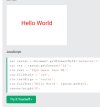- خرید بلیط هواپیما
- خرید آی پی ثابت
- ایزی وی پی اس ezivps.com
- کلینیک روانشناسی آوان
- تجهیزات هوشمند سازی گیلسا
- خرید هاست ماهان سرور
- گروه صنعتی اسکندری
- معماری ایرانی اسلامی
- کارت ویزیت لایه باز
- خرید آی پی ثابت سیتی سرور
- خرید و فروش بیت کوین
- خرید کالای دیجیتال استوک
- خرید دوچرخه
- مشاوره کسب و کار
- سرور دست دوم اچ پی دکتر
- ممبر واقعی تلگرام
- خرید سیم کارت خارجی
- قیمت سرور dl380 hp g9
- فیلم دوبله فارسی
- خرید فالوور اینستاگرام
- پلتفرم رپورتاژ تسمینو
- چاپ لیبل برجسته | UV DTF
You are using an out of date browser. It may not display this or other websites correctly.
You should upgrade or use an alternative browser.
You should upgrade or use an alternative browser.
کانواس
- شروع کننده موضوع saalek110
- تاریخ شروع
saalek110
Well-Known Member
رسم چند نقطه:
JavaScript:
<!DOCTYPE html>
<html>
<body>
<canvas id="myCanvas" width="400" height="400" style="border:1px solid grey"></canvas>
<script>
const canvas = document.getElementById("myCanvas");
const ctx = canvas.getContext("2d");
canvas.height = canvas.width;
ctx.transform(1, 0, 0, -1, 0, canvas.height)
const xArray = [50,60,70,80,90,100,110,120,130,140,150];
const yArray = [7,8,8,9,9,9,10,11,14,14,15];
ctx.fillStyle = "red";
for (let i = 0; i < xArray.length-1; i++) {
let x = xArray[i]*400/150;
let y = yArray[i]*400/15;
ctx.beginPath();
ctx.ellipse(x, y, 3, 3, 0, 0, Math.PI * 2);
ctx.fill();
}
</script>
</body>
</html>
آخرین ویرایش:
saalek110
Well-Known Member
رسم یک مربع آبی:
منبع:
 fa.wikipedia.org
fa.wikipedia.org
JavaScript:
<!DOCTYPE html>
<html>
<body>
<canvas id="myCanvas" width="400" height="400" style="border:1px solid grey"></canvas>
<script>
const canvas = document.getElementById("myCanvas");
const ctx = canvas.getContext("2d");
ctx.fillStyle = 'blue';
ctx.fillRect(30, 30, 50, 50);
</script>
</body>
</html>منبع:
عنصر کانواس - ویکیپدیا، دانشنامهٔ آزاد
آخرین ویرایش:
saalek110
Well-Known Member
رسم دو مربع:
JavaScript:
<!doctype html>
<html lang="en-US">
<head>
<meta charset="UTF-8" />
<title>Canvas experiment</title>
</head>
<body>
<canvas id="canvas" width="150" height="150"></canvas>
<script type="application/javascript">
function draw() {
const canvas = document.getElementById("canvas");
if (canvas.getContext) {
const ctx = canvas.getContext("2d");
ctx.fillStyle = "rgb(200, 0, 0)";
ctx.fillRect(10, 10, 50, 50);
ctx.fillStyle = "rgba(0, 0, 200, 0.5)";
ctx.fillRect(30, 30, 50, 50);
}
}
draw();
</script>
</body>
</html>
آخرین ویرایش:
saalek110
Well-Known Member
همان منبع.
مربع قرمز توخالی:
آپلود شد در:
منبع:
 developer.mozilla.org
developer.mozilla.org
مربع قرمز توخالی:
JavaScript:
<!doctype html>
<html lang="en-US">
<head>
<meta charset="utf-8" />
<title>Canvas tutorial</title>
<style>
canvas {
border: 1px solid black;
}
</style>
</head>
<body>
<canvas id="tutorial" width="150" height="150"></canvas>
<script>
function draw() {
const canvas = document.getElementById("tutorial");
if (canvas.getContext) {
const ctx = canvas.getContext("2d");
}
}
window.addEventListener("load", draw);
</script>
</body>
</html>آپلود شد در:
منبع:
Basic usage of canvas - Web APIs | MDN
Let's start this tutorial by looking at the <canvas> HTML element itself. At the end of this page, you will know how to set up a canvas 2D context and have drawn a first example in your browser.
آخرین ویرایش:
saalek110
Well-Known Member
کانواس در مقابل گرافیک برداری مقیاس پذیر (SVG)
اسویجی یک استاندارد قدیمیتر برای طراحی اشکال در مرورگرهای است. با این حال، برخلاف کانواس که از گرافیک شطرنجی استفاده میکند، SVG برداری است، به طوری که هر یک شکل کشیده شده به به عنوان یک شی در مدل شیءگرای سند نمایش داده میشود که در انتها به بیتمپ تبدیل میشود. این به این معنی است که اگر ویژگیهای یک شی SVG تغییر کند، مرورگر میتواند بهطور خودکار آن شی را دوباره تغیر دهد.
اما از سوی دیگر، اشیا کانواس در حالت فوری کشیده میشوند. در مثال کانواس بالا، یکبار مستطیل مدلی را رسم میکند که توسط سیستم کشیده شدهاست. اگر موقعیت آن تغییر کند، کل صحنه باید مجدداً ترسیم شود، از جمله هر شی که ممکن است توسط مستطی لپوشش داده شدهباشد. اما در مورد SVG، میتوان به سادگی ویژگیِ موقعیت مستطیل را تغییر داد و مرورگر مشخص میکند که چگونه آن را بازنمایی کند.
تصاویر اسویجی در اکسامال نمایش داده میشوند، و صحنههای پیچیده را میتوان با ابزارهای ویرایش اکسامال به وجود آورد.
SVG میتوان از گردانندگان رویداد (event handlers) استفاده کند و به هر شی یک رویداد بافزاید و مثلاً یک مستطیل به رویداد onClick واکنش نشان دهد. اما در کانواس اینطور نیست و برای ایجاد یک رویداد onClick در آن، باید مختصات محل کلیک کردن موس را دریافت و آن را با مختصات مستطیل رسم شده مقایسه کرد تا مشخص کرد که آیا کلیک صورت گرفته یا خیر.
از نظر مفهومی، کانواس یک API سطح پایینتر است که برای مثالبا آن میتوان یک موتورِ نمایشِ SVG ساخته شود.
 fa.wikipedia.org
fa.wikipedia.org
تاپیک svg:

اسویجی یک استاندارد قدیمیتر برای طراحی اشکال در مرورگرهای است. با این حال، برخلاف کانواس که از گرافیک شطرنجی استفاده میکند، SVG برداری است، به طوری که هر یک شکل کشیده شده به به عنوان یک شی در مدل شیءگرای سند نمایش داده میشود که در انتها به بیتمپ تبدیل میشود. این به این معنی است که اگر ویژگیهای یک شی SVG تغییر کند، مرورگر میتواند بهطور خودکار آن شی را دوباره تغیر دهد.
اما از سوی دیگر، اشیا کانواس در حالت فوری کشیده میشوند. در مثال کانواس بالا، یکبار مستطیل مدلی را رسم میکند که توسط سیستم کشیده شدهاست. اگر موقعیت آن تغییر کند، کل صحنه باید مجدداً ترسیم شود، از جمله هر شی که ممکن است توسط مستطی لپوشش داده شدهباشد. اما در مورد SVG، میتوان به سادگی ویژگیِ موقعیت مستطیل را تغییر داد و مرورگر مشخص میکند که چگونه آن را بازنمایی کند.
تصاویر اسویجی در اکسامال نمایش داده میشوند، و صحنههای پیچیده را میتوان با ابزارهای ویرایش اکسامال به وجود آورد.
SVG میتوان از گردانندگان رویداد (event handlers) استفاده کند و به هر شی یک رویداد بافزاید و مثلاً یک مستطیل به رویداد onClick واکنش نشان دهد. اما در کانواس اینطور نیست و برای ایجاد یک رویداد onClick در آن، باید مختصات محل کلیک کردن موس را دریافت و آن را با مختصات مستطیل رسم شده مقایسه کرد تا مشخص کرد که آیا کلیک صورت گرفته یا خیر.
از نظر مفهومی، کانواس یک API سطح پایینتر است که برای مثالبا آن میتوان یک موتورِ نمایشِ SVG ساخته شود.
عنصر کانواس - ویکیپدیا، دانشنامهٔ آزاد
تاپیک svg:
saalek110
Well-Known Member
رسم یک خط:

 www.w3schools.com
www.w3schools.com
JavaScript:
<!DOCTYPE html>
<html>
<body>
<canvas id="myCanvas" width="200" height="100" style="border:1px solid #d3d3d3;">
Your browser does not support the HTML canvas tag.</canvas>
<script>
var c = document.getElementById("myCanvas");
var ctx = c.getContext("2d");
ctx.moveTo(0,0);
ctx.lineTo(200,100);
ctx.stroke();
</script>
</body>
</html>
W3Schools online HTML editor
The W3Schools online code editor allows you to edit code and view the result in your browser
saalek110
Well-Known Member
رسم دایره:
مقدار اول و دوم x و y است، یعنی محل قرار گرفتن. ، سومی شعاع دایره است.
چهارمی مقدار کمانی است که می خواهیم رسم کنیم. برای دایره کامل صفر بدهید.

 www.w3schools.com
www.w3schools.com
JavaScript:
<!DOCTYPE html>
<html>
<body>
<canvas id="myCanvas" width="200" height="100" style="border:1px solid #d3d3d3;">
Your browser does not support the HTML canvas tag.</canvas>
<script>
var c = document.getElementById("myCanvas");
var ctx = c.getContext("2d");
ctx.beginPath();
ctx.arc(95,50,40,0,2*Math.PI);
ctx.stroke();
</script>
</body>
</html>مقدار اول و دوم x و y است، یعنی محل قرار گرفتن. ، سومی شعاع دایره است.
چهارمی مقدار کمانی است که می خواهیم رسم کنیم. برای دایره کامل صفر بدهید.

W3Schools online HTML editor
The W3Schools online code editor allows you to edit code and view the result in your browser
آخرین ویرایش:
saalek110
Well-Known Member
نوشتن متن :

 www.w3schools.com
www.w3schools.com
JavaScript:
<!DOCTYPE html>
<html>
<body>
<canvas id="myCanvas" width="200" height="100" style="border:1px solid #d3d3d3;">
Your browser does not support the HTML canvas tag.</canvas>
<script>
var c = document.getElementById("myCanvas");
var ctx = c.getContext("2d");
ctx.font = "30px Arial";
ctx.fillText("Hello World",10,50);
</script>
</body>
</html>
W3Schools online HTML editor
The W3Schools online code editor allows you to edit code and view the result in your browser
saalek110
Well-Known Member
JavaScript:
<script>
var c = document.getElementById("myCanvas");
var ctx = c.getContext("2d");
ctx.font = "30px Arial";
ctx.strokeText("Hello World", 10, 50);
</script>Stroke Text

W3Schools.com
W3Schools offers free online tutorials, references and exercises in all the major languages of the web. Covering popular subjects like HTML, CSS, JavaScript, Python, SQL, Java, and many, many more.
saalek110
Well-Known Member
رسم عکس:
شرح : یک عکس در صفحه موجود است ،با استفاده از id آن متغیر img را ساخته است
و بعد با drawImage تصویر را رسم کرده.

 www.w3schools.com
www.w3schools.com
JavaScript:
<!DOCTYPE html>
<html>
<body>
<p>Image to use:</p>
<img id="scream" src="img_the_scream.jpg" alt="The Scream" width="220" height="277">
<p>Canvas to fill:</p>
<canvas id="myCanvas" width="250" height="300"
style="border:1px solid #d3d3d3;">
Your browser does not support the HTML canvas tag.</canvas>
<p><button onclick="myCanvas()">Try it</button></p>
<script>
function myCanvas() {
var c = document.getElementById("myCanvas");
var ctx = c.getContext("2d");
var img = document.getElementById("scream");
ctx.drawImage(img,10,10);
}
</script>
</body>
</html>شرح : یک عکس در صفحه موجود است ،با استفاده از id آن متغیر img را ساخته است
و بعد با drawImage تصویر را رسم کرده.

W3Schools online HTML editor
The W3Schools online code editor allows you to edit code and view the result in your browser
saalek110
Well-Known Member
باز رسم مستطیل:

 www.w3schools.com
www.w3schools.com


W3Schools online HTML editor
The W3Schools online code editor allows you to edit code and view the result in your browser

saalek110
Well-Known Member
Canvas Coordinates
The HTML canvas is a two-dimensional grid.
The upper-left corner of the canvas has the coordinates (0,0)
n the previous chapter, you saw this method used: fillRect(0,0,150,75).
This means: Start at the upper-left corner (0,0) and draw a 150x75 pixels rectangle.

 www.w3schools.com
www.w3schools.com
میگه بالا و چپ مختصات صفر و صفر است برای رسم اون مستطیل قرمز از نقطه صفر و صفر به اندازه ۱۵۰ و ۷۵ پیکسل رسم کرده ایم.
The HTML canvas is a two-dimensional grid.
The upper-left corner of the canvas has the coordinates (0,0)
n the previous chapter, you saw this method used: fillRect(0,0,150,75).
This means: Start at the upper-left corner (0,0) and draw a 150x75 pixels rectangle.

W3Schools.com
W3Schools offers free online tutorials, references and exercises in all the major languages of the web. Covering popular subjects like HTML, CSS, JavaScript, Python, SQL, Java, and many, many more.
میگه بالا و چپ مختصات صفر و صفر است برای رسم اون مستطیل قرمز از نقطه صفر و صفر به اندازه ۱۵۰ و ۷۵ پیکسل رسم کرده ایم.
saalek110
Well-Known Member
Drawing Methods
There are only 3 methods to draw directly on the canvas:| Method | Description |
|---|---|
| fillRect() | Draws a "filled" rectangle |
| strokeRect() | Draws a rectangle (with no fill) |
| clearRect() | Clears specified pixels within a rectangle |
Path Methods
| Method | Description |
|---|---|
| beginPath() | Begins a new path or resets the current path |
| closePath() | Adds a line to the path from the current point to the start |
| isPointInPath() | Returns true if the specified point is in the current path |
| moveTo() | Moves the path to a point in the canvas (without drawing) |
| lineTo() | Adds a line to the the path |
| fill() | Fills the current path |
| rect() | Adds a rectangle to the path |
| stroke() | Draws the current path |
| Circles and Curves | |
| bezierCurveTo() | Adds a cubic Bézier curve to the path |
| arc() | Adds an arc/curve (circle, or parts of a circle) to the path |
| arcTo() | Adds an arc/curve between two tangents to the path |
| quadraticCurveTo() | Adds a quadratic Bézier curve to the path |
ADVERTISEMENT
Text
| Method/Prop | Description |
|---|---|
| direction | Sets or returns the direction used to draw text |
| fillText() | Draws "filled" text on the canvas |
| font | Sets or returns the font properties for text content |
| measureText() | Returns an object that contains the width of the specified text |
| strokeText() | Draws text on the canvas |
| textAlign | Sets or returns the alignment for text content |
| textBaseline | Sets or returns the text baseline used when drawing text |
Colors, Styles, and Shadows
| Method/Property | Description |
|---|---|
| addColorStop() | Specifies the colors and stop positions in a gradient object |
| createLinearGradient() | Creates a linear gradient (to use on canvas content) |
| createPattern() | Repeats a specified element in the specified direction |
| createRadialGradient() | Creates a radial/circular gradient (to use on canvas content) |
| fillStyle | Sets or returns the color, gradient, or pattern used to fill the drawing |
| lineCap | Sets or returns the style of the end caps for a line |
| lineJoin | Sets or returns the type of corner created, when two lines meet |
| lineWidth | Sets or returns the current line width |
| miterLimit | Sets or returns the maximum miter length |
| shadowBlur | Sets or returns the blur level for shadows |
| shadowColor | Sets or returns the color to use for shadows |
| shadowOffsetX | Sets or returns the horizontal distance of the shadow from the shape |
| shadowOffsetY | Sets or returns the vertical distance of the shadow from the shape |
| strokeStyle | Sets or returns the color, gradient, or pattern used for strokes |
Transformations
| Method | Description |
|---|---|
| scale() | Scales the current drawing bigger or smaller |
| rotate() | Rotates the current drawing |
| translate() | Remaps the (0,0) position on the canvas |
| transform() | Replaces the current transformation matrix for the drawing |
| setTransform() | Resets the current transform to the identity matrix. Then runs transform() |
Image Drawing
| Method | Description |
|---|---|
| drawImage() | Draws an image, canvas, or video onto the canvas |
The ImageData Object / Pixel Manipulation
| Method/Property | Description |
|---|---|
| createImageData() | Creates a new, blank ImageData object |
| getImageData() | Returns an ImageData object that copies the pixel data for the specified rectangle on a canvas |
| ImageData.data | Returns an object that contains image data of a specified ImageData object |
| ImageData.height | Returns the height of an ImageData object |
| ImageData.width | Returns the width of an ImageData object |
| putImageData() | Puts the image data (from a specified ImageData object) back onto the canvas |
Compositing
| Property | Description |
|---|---|
| globalAlpha | Sets or returns the current alpha or transparency value of the drawing |
| globalCompositeOperation | Sets or returns how a new image are drawn onto an existing image |
Other Methods
| Method | Description |
|---|---|
| clip() | Clips a region of any shape and size from the original canvas |
| save() | Saves the state of the current drawing context and all its atributes |
| restore() | Restores the previously saved state and attributes |
| createEvent() | |
| getContext() | |
| toDataURL() |
saalek110
Well-Known Member
منبع جداول بالا:

 www.w3schools.com
www.w3schools.com

W3Schools.com
W3Schools offers free online tutorials, references and exercises in all the major languages of the web. Covering popular subjects like HTML, CSS, JavaScript, Python, SQL, Java, and many, many more.
آخرین مطالب مجیدآنلاین
-
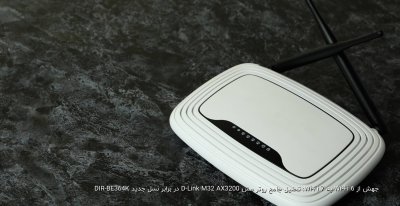
-

-
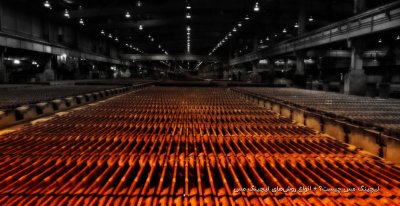
-

-

-

-

-

-
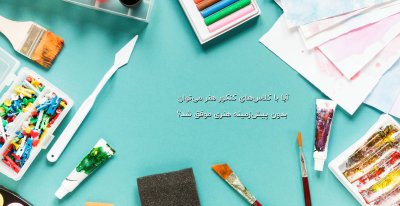
-
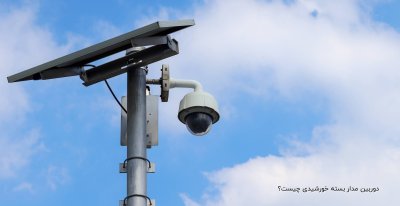
جدیدترین ارسال ها
-
-
-
Sony ZV-E10 یا Sony ZV-E10 II؟ انتخاب درست برای تولیدکنندگان محتوا
- آخرین: mehrdadaqaloo
-
-
-
-
-
-
-
-

